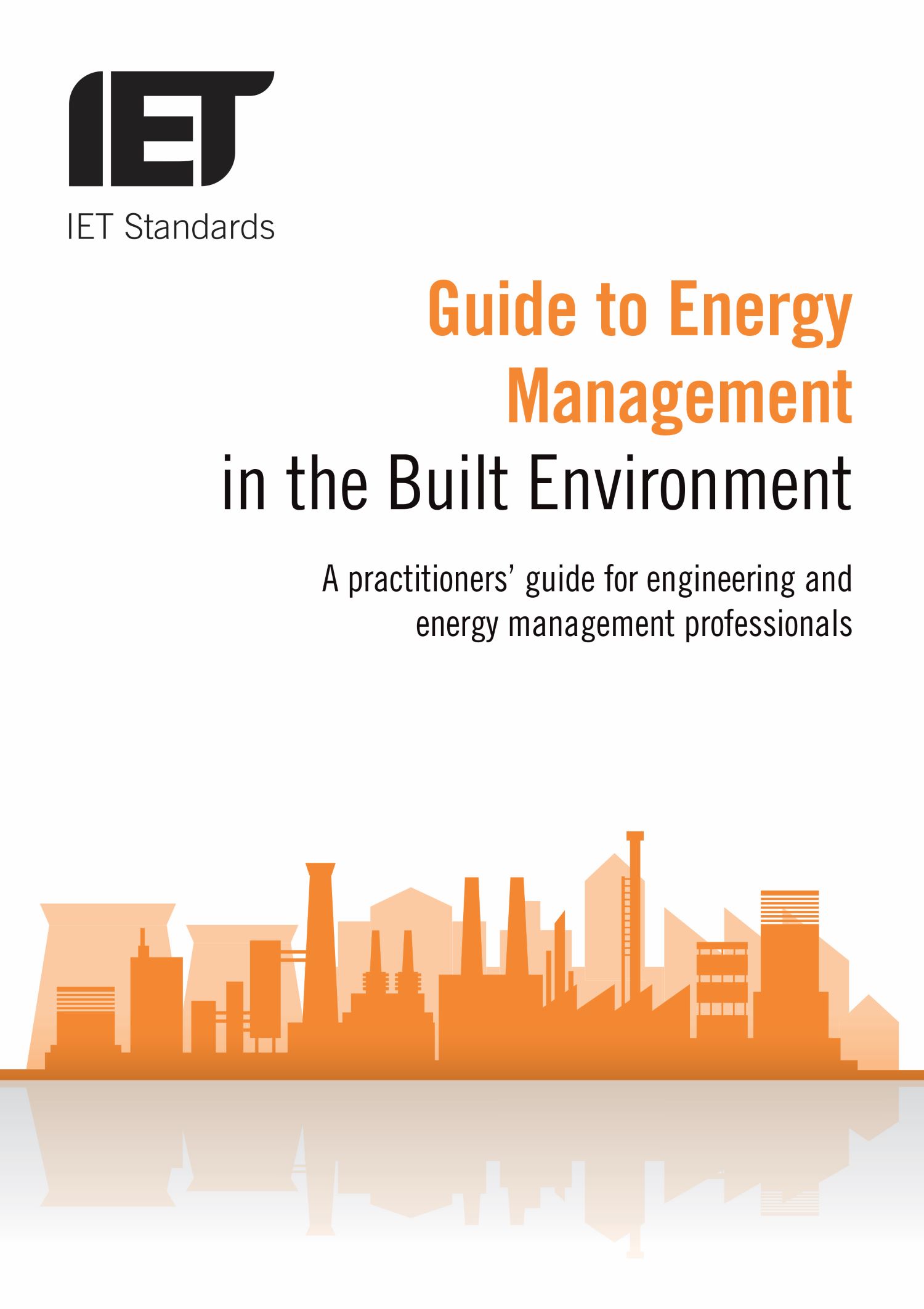- Built Environment
- Computing and Networks
- Control, Robotics and Sensors
- Electrical Regulations
- Electromagnetics and Radar
- Energy Engineering
- Healthcare Technologies
- History and Management of Technology
- IET Codes and Guidance
- Manufacturing
- Materials, Circuits and Devices
- Model Forms
- Security
- Telecommunications
- Transportation
In stock

Guide to Energy Management in the Built Environment
The Guide to Energy Management in the Built Environment aims to provide clear and concise information that can be developed and applied to a number of different installations.
The role of the energy manager is often to turn the lights off, but for a business to operate successfully the role of the engineering manager is to keep the lights on. There may be potential conflict of interests, but they both need to work together. For energy managers, international document ISO 50001 provides a framework using the universal plan, do, check, act model that is often adapted to manage improvements in the engineering world.
There is no single solution: energy management processes must be adapted to meet specific local requirements, but the principal aspects will apply to all installations. The requirements outlined within this Guide will assist the reader to understand the context of their own estates and adapt the process to reduce the consumption of energy in a meaningful way.
Within the Built Environment large amounts of energy are used as we all go about our daily lives: at work, at rest or in our recreational activities. Populations increase, nations develop, technology advances - all increasing energy demands. Properly planned and implemented energy management systems provide coherent strategies and real benefits to the wellbeing of staff and visitors, to an organisation's profitability, and to the environment.
Doing nothing and carrying on regardless (typically classified as 'business as usual') is not an option.
The duties and responsibilities of an energy manager are evolving. Some organisations, typically larger estates and corporations, will have a clearly defined role for managing energy; others will fall into the role as one more responsibility amongst many, typically within smaller companies.
This Guide should be used by all those with specific or delegated responsibility for managing the procurement, consumption and control of energy. It provides tools to assist energy managers and engineering staff to understand the correlation between their respective duties. It also discusses in greater detail the framework required for successful energy management processes, better coordination with engineering design and interface activities with engineering maintenance throughout the life cycle of the installation or estate.
This includes energy, facilities, building and environment managers, project managers and design engineers and associated building operation and support engineers and technicians.
Publication Year: 2017
Pages: 150
ISBN-13: 978-1-78561-112-4
Format: PBK
